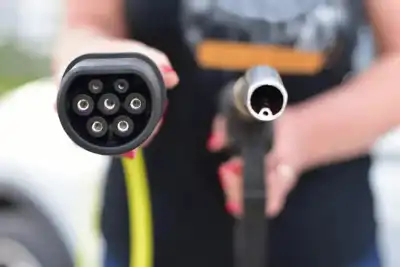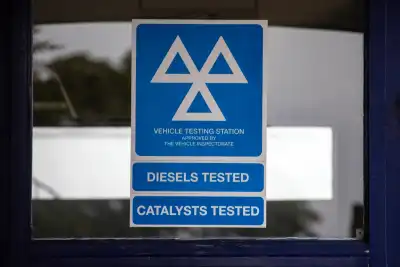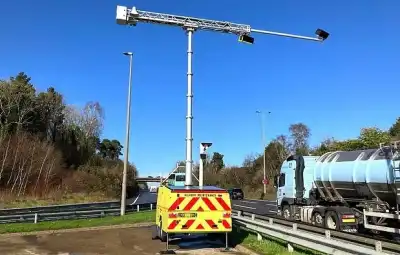
Our readers had questions that needed answering as we know many of you are considering choosing an electric model as your next car.
So we put them to Co Charger CEO, Joel Teague...
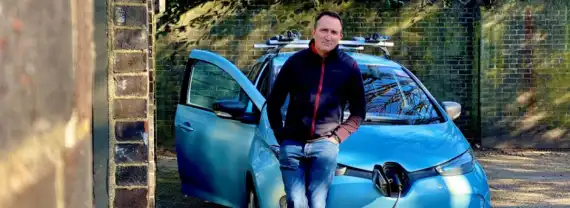
Following our piece with you in early December, a couple of our readers expressed some reservations, including about the convenience of charging an electric car compared to filling up with petrol or diesel today. What's your take on charging convenience and how do you think it will evolve over time?
This is one of my favourite subjects because it’s at the heart of one of the bigger misconceptions about EVs. We often hear “EV charging should be as easy/convenient as conventional cars are to refuel”. But what this should really say is “Public EV charging should be as easy/convenient as conventional cars are to refuel.” Quite right too!
What the first statement misses is that public charging is an exception with an EV. Around 90% of charging happens at Base, i.e. while the driver is at home or at work. It’s very much like a mobile phone: you charge it where and when is convenient and go about your life; you don’t notice or care how long it takes. In other words, charging an EV is already far easier and more convenient than fuelling a fossil fuel car – it’s one of the things people love about EVs!

Other readers said EVs are overpriced with poor range. We know through our own research that price is a major barrier for many to enter the EV market and that was only worsened when the Government removed its incentives. Our research also shows that range anxiety however is reducing but it is still very much there - where do you stand on those issues?
On price: we have been conditioned to look at price, but it’s cost that matters. You don’t pay the ticket price for a car; you pay the lease or depreciation, plus the running cost. That changes things completely.
Very often drivers of EVs end up paying less to lease and run their new EV than they used to pay on fuel, tax and servicing their fossil fuel car. Overall, while there are rare exceptions, it’s true to say the following
EVs are usually priced higher than their fossil fuel equivalents but cost less than their fossil fuel equivalents.
So we need to start talking about cost, not price – because they are not the same thing.
On range: this is another common misunderstanding - that charging an EV is similar to fuelling an ICE car. In reality, it’s nothing like it.
Running an EV is similar to running a mobile phone: Why does your mobile phone not have a battery big enough for a week? Why are there no phone chargers along the M6? The answer to both is: “because you don’t need them.” Because you charge at Base – something you can’t do with a fossil fuel car.
And because over 95% of round-trip journeys are within the range of a typical EV, this means that in practice the range of an EV is far less important than people think. For those rarer, long trips, if your EV has a reasonable range and a good rate of charge, the chances are that stopping to charge will coincide with when you’d take a comfort break anyway. My advice is - choose a car for your usual type of driving, not for the exception. Buying for those rare, 300-mile days could cost you thousands and you’ll be polluting your neighbourhood all the year round.
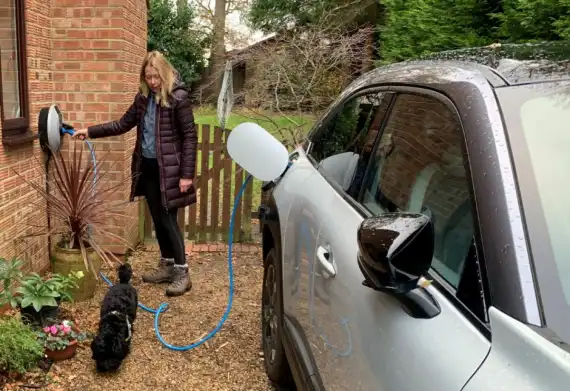
How does your app make sure people pay before they take their car and how also can you make sure cars are removed from your driveway on time?
This question goes to the heart of why Co Charger had to be designed specifically for Community Charging: it’s all about neighbours.
As a Co Charger Host, you’re very often the reason a Chargee can make the switch to an EV in the first place. They need you. They know you and they live nearby. Leaving a car for longer than your booking is a great way of getting future bookings declined or cancelled (as with any other kind of inconsiderate behaviour). It’s in everyone’s best interest to behave – and they do! We’ve never seen a conflict between Host and Chargee. But that doesn’t mean we haven’t built in a lot of security features…
First of all, a Chargee can’t even request a booking until they have a verified payment card registered with their app – and the process of setting that up also checks their identity.
The Host remains in control. In order for a session to go ahead, they have to accept a booking; nobody can just “rock up and charge”. At the end of each session, Hosts get a summary of the session so they can check the numbers and as soon as they tap ‘Approve’ the payment is taken from the Chargee’s card. The 12% fee is deducted to run the scheme, and the rest goes into the Host’s account.
If there’s anything that doesn’t look right they just tap ‘Query’ and our administrators can look at the session – complete with the photos of the car’s dashboard that the app made the Chargee take, just to prove all the numbers and timings. Adjustments can then be made depending on what’s found. The query facility is rarely used in practice, but it’s good to know it’s there – and so far there’s never been a disagreement between a Host and their Chargee.
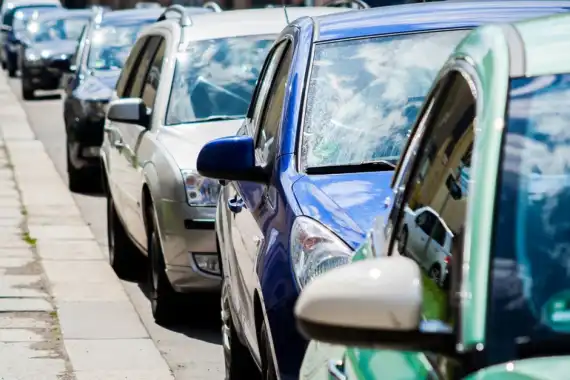
Many have expressed resentment towards pavement parking. We're guessing that's essentially why your business was set up. What's your take on what powers local authorities need to be able to do to make sure pavements are reserved for pedestrians?
There are two separate issues here, which often get conflated: legality and liability. Many Councils have
announced that they will tolerate ‘safe’ trailing of charger cables over pavements using things like cable covers. But this doesn’t make things easy for wheelchair and pushchair users on those footpaths, and it doesn’t remove the legal liability, should someone come to grief on the cable.
That’s why things are so difficult for local authorities. They have to improve air quality, but can’t do that at the expense of people using footpaths – especially those in wheelchairs or with pushchairs.
It is why Co Charger was created – to make use of the hundreds of thousands of chargers we already have, in residential areas, unused for 95% of the time and with a person on site to ensure the space is available and the charger is working.
All local authorities need to do is encourage use of Co Charger. A good campaign can create hundreds of available Community Charge Points and provide thousands of people in flats and terraces with a great base charging option – all for the cost of some good public communications. Best of all, the whole thing scales as EV take-up scales. It’s a huge win-win.
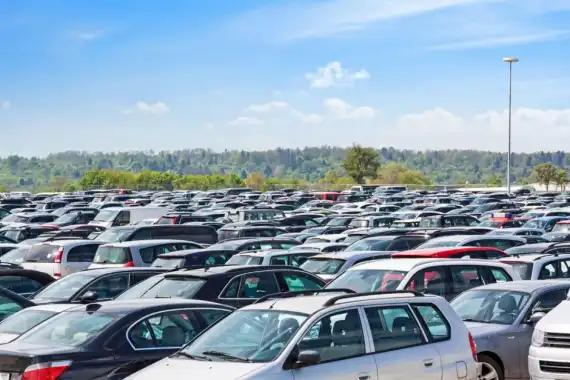
The Government is failing woefully in its target of installing 700 charge points per day to hit its 2030 target. What noises do you hear from those in power about charging infrastructure installation and do you think we will have 2.5m chargers installed by 2030?
This, for me, is one of the most frustrating subjects in EV charging because it takes that non-sequitur of “charging equals fuelling” and extends it to a multi-billion-pound misunderstanding that will slow the transition to sustainable motoring.
Yes, of course we need lots of public chargers - but we must understand what they are going to be used for if we’re to deliver the right ones, in the right quantities, in the right places. The crazy numbers being quoted (like 2.5 million chargers) seem to be based on the idea that all these EVs will stop en route to charge up just like fuel cars do. They won’t. You only do that with a fuel car because you have to, not because it’s a good thing. If motorists had fuel pumps at home that magically topped up their cars at 15p per litre while they slept, how many fuel stations would we need?
On top of that, there’s an even bigger hole in the logic: research makes it clear that most people who cannot have a charger at home will not switch to an EV because there are lots of public chargers. It’s simply too inconvenient, expensive and unpredictable.
What we need therefore is Base charging for everyone – that’s the 90% of EV charging that makes the difference; the 90% that gets people out of fossil fuel vehicles. We must put our efforts into making sure that everyone can charge dependably and affordably while they are at home or at work. Otherwise the market for all those public chargers is literally halved.
The good news is that we already have plenty of chargers for that – we just have to share them. There’s approaching half a million home and workplace chargers already installed in the UK, with well over 500 more going in every day. And it’s accelerating. All we have to do is share some of them – just 4% will do the trick – and that “impossible gap” is filled – without so much as a fuse installed, a penny spent, a road dug up, or a day more wasted.
This is my message to the whole industry: focus on what moves the needle because we all benefit from more EVs and fewer fossil fuel vehicles on the roads. The solution is right there: immediate, free and self-scaling. It’s why Co Charger exists.
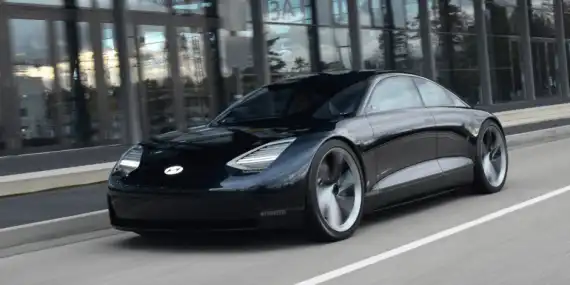
Do you have any facts and figures for our readers around the average cost per charge when using community chargers vs other private charge points?
Co Charger Hosts get to set their own rates, and the average is around £1.75 per hour, which is equivalent to just under 24p per kWh. For a bookable charger where you can plug in, go home and then come back when it suits you, this is unique.
For an average car on average miles that equates to around £9 per weekly charging session, of which £7.92 goes to the Host. That means someone without a home charger will typically spend under £500 per year charging their car – without incurring the hassle and cost of installing their own charger.
It’s a little misleading to compare this with public charging, because of course that public charging generally does not deliver the same benefits, even though they can cost twice as much to use. The point of Community Charging is that you plug in and go home – overnight if you like – and pick the car up when it’s convenient. It gives all the benefits of having a home charger, but with a slightly longer walk to your door.
What is the cost of installation for a community charger and how do you see that evolving over time?
A Community Charger is just a home or workplace charger that’s shared. There’s no additional cost. That’s the beauty of it – a typical home charger costs around £1,000 to buy and install (minus the £350 Government grant while you can still get it) and yet it will typically be used for just 5 hours per week. It costs nothing to get the Co Charger app, set up a Host account and make it available to the neighbourhood. Doing so helps clean up the air around you while making good money from your charger. It’s a genuine win-win.

